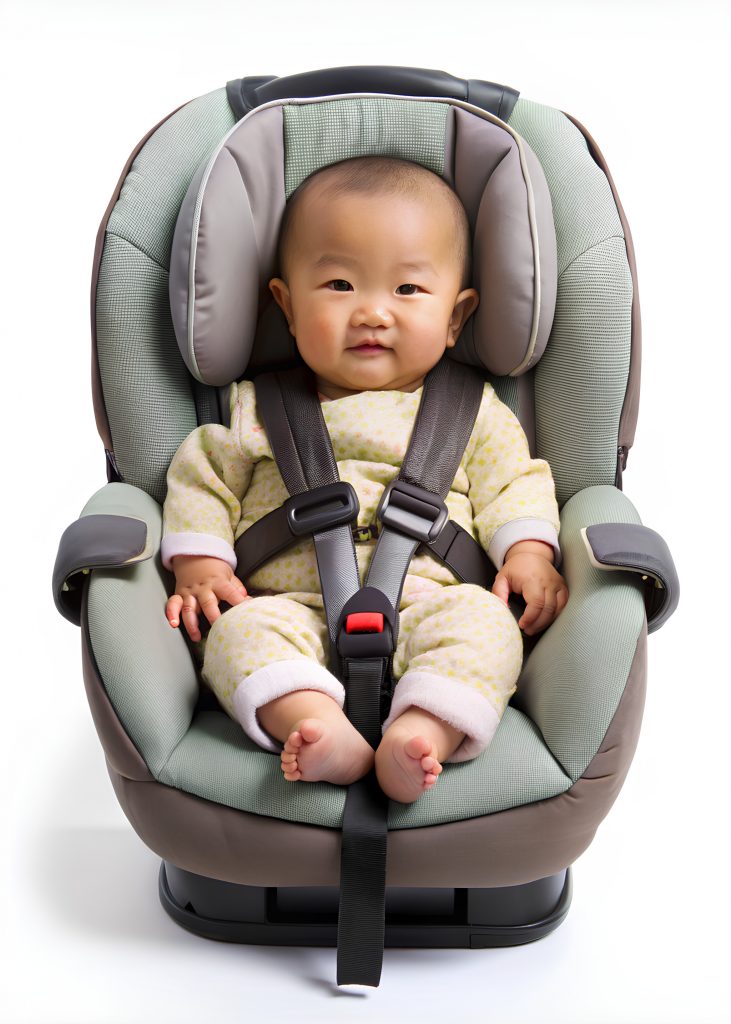Every parent wants their precious cargo well-secured for travel. Knowing the best types of seats and orientation in the car at various stages can be overwhelming. Safety, comfort and ease of use can help keep your child secure and you more relaxed while driving.
The National Highway Traffic Safety Administration (NHTSA) advocates for keeping children in a car seat as long as possible, as well as keeping them rear-facing as long as you can. The backseat is the safest spot for children, in the center when possible. Several factors will weigh in on when to switch from one step to another, depending on a child’s age, weight, height, development and the safety specifications of the car seat manufacturer.
Birth to 12 Months
Infants should remain in a rear-facing car seat for the first year of life. The American Academy of Pediatrics states there are three different types of car seats that are suitable for infants:
1. Infant Only
• May only be installed rear-facing
• Typically have a base that stays installed in the vehicle and a carrying handle for the parent to carry the child around outside of the car
• Used for infants up to 22-35 pounds and 26-35”
2. Convertible
• Can be rear-facing and later moved to forward-facing
• May have higher weight and height limits for rear-facing than infant only seats (some up to 40-50 pounds)
• Seat stays installed in car
3. All-in-One Seats
• Convert from rear-facing to forward-facing to booster seat
• May have higher weight and height limits for rear-facing than infant only seats (some up to 40-50 pounds)
• Seat stays installed in car
• Often larger than some of the other seats so important to check if it will fit in your vehicle in the rear-facing setting
Deciding which type of infant seat is best for you depends on your car size, your child’s size and your budget. If your baby is born premature, talk to your pediatrician in the hospital to ensure the baby’s safety from his first car ride.
1 – 3 Years
Keep children rear-facing as long as possible, up to the maximum height and weight restrictions for your seat. Once the child has grown to the next size, they are ready to be moved into a forward- facing seat with a harness. This usually happens sometimes between a child’s first birthday and their third year. These seats typically remain installed in the car from trip to trip.
4 – 7 Years
Children should remain in a forward-facing seat with a harness until they reach the maximum height or weight specifications for the seat. At this time, children can then move into a booster seat. Booster seats should still remain in the backseat of the car. When positioning the child in the booster seat, the lap and shoulder belt of the car’s seat belt system will be used to hold the child securely in place. It is important that the lap belt fit snugly across the child’s upper thighs, not on the stomach. The shoulder belt should sit across the middle of the chest and shoulder, and not press on the neck. Booster seats are often easy to take in and out of the car or move to other vehicles as needed.
8 – 12 Years
Children should remain in a booster seat until they are able to be properly positioned on the seat with the seat belt fitting snugly across the upper thighs and the shoulder belt comfortably across the chest, not leaning against the neck or face. Children should still sit in the back seat even when they transition to the standard seat belt, as it’s the safest location for them. The American Academy of Pediatrics (AAP) recommends that all children under the age of 13 should remain in the backseat. In a front-end collision, front seat passengers take the brunt of the impact. Airbags are powerful tools that are designed with adult specifications in mind. Children can suffer serious injuries from airbags due to their size and development.
Unsure what type of seat your child needs? Talk to your pediatrician as well as consulting the specifications of the seat you own. The longer your child can stay rear-facing, the safer they are. Keeping children in some form of special seating as long as possible can help keep them safe in the event of an accident. If you’re unsure how to install your seat or would feel better having installation checked for safety, there are many resources in our community that will help, free of charge.
Contact one of these local agencies to schedule a safety check.
Healthy Start
204 W University Ave 3rd Floor, Suite B
Gainesville, FL 32601
Phone: 352.337.1200
Contact: Kasey Brooks
Appointment required. Weekdays from 8 a.m. to 5 p.m.
*Spanish services required
Gainesville Fire Rescue
1025 NE 13th St.
Gainesville, FL 32601
Phone: 352.393.8461
Contact: Krista Ott
Monday – Thursday/ 8 a.m. to 5 p.m. / By Appointment
Alachua County Health Department
224 SE 24th S.
Gainesville, FL 32641
Phone: 352.225.4354
Contact: Pamela Lambert
3rd Tuesday of the month / 9 a.m. – 11 a.m.
*Spanish Translation is available
Levy County Health Department
66 W Main St.
Bronson, FL 32621
Phone: 352.486.5300
Contact: Lori Spadavecchia
Appointment required. Weekdays from 8 a.m. to 5 p.m.
Parents as Teachers
2770 NW 6th St.
Gainesville, FL 32609
Phone: 352.203.0628
Appointment required. Weekdays from 8 a.m. to 5 p.m.
*Spanish speaking technicians available
Related Articles:
Top 10 Instructions for Your Babysitter

